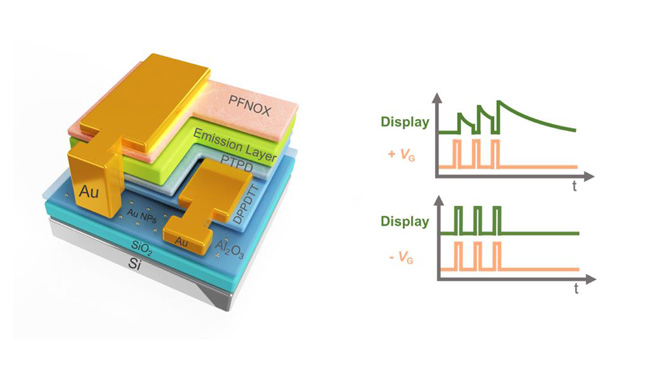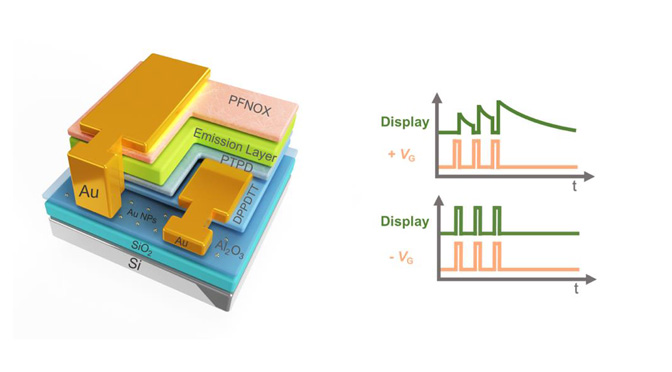Researchers from the University of Strasbourg and CNRS (France) have fabricated organic light-emitting transistors with long afterglow that can respond to different bionic stimuli. These results have been published in the Science Advances.
Organic light-emitting transistors (OLETs) have attracted a great interest for the past few years as multifunctional optoelectronic elements for the fabrication of the next generation of active-matrix displays. OLETs are unique platforms that simultaneously integrate dual functionalities, namely the light generation of light-emitting diodes and the current modulation and signal amplification of field-effect transistors, in a single device.
The afterglow phenomenon, also known as persistent luminescence after stimulus, consists of a long-lived light emission from a material that can last up to several seconds after the light excitation has stopped, like in familiar “glow-in-the-dark” items.
In this work, the team of researchers from Strasbourg have developed a new type of long-afterglow OLET, whose structure comprises a stack of four functional polymer layers (acting as channel, hole transport, light emission, and electron transport layers, respectively) and a thin film of gold nanoparticles (acting as the “nano-floating” gate used to operate the device).
When a positive gate voltage pulse is applied to the OLET, long-afterglow light emission is observed. The brightness and lifetime of this long-afterglow light emission could be enhanced and prolonged by repeating the positive gate voltage stimulus. Conversely, instant shorted-lived luminescence is obtained with a negative gate voltage pulse. These two different operating modes enable reconfigurable displays.
Furthermore, by implementing various semiconducting polymers emitting light of different colors (i.e., red, yellow, green, and blue), full-color long-afterglow OLETs covering the entire visible light spectrum can be achieved.
Ultimately, after coupling the green long-afterglow OLET with a pressure-sensitive graphene sponge, long-afterglow light emission can be trigged by exerting an external force, demonstrating a proof-of-concept long-afterglow pressure sensor. Endowed with responsiveness to distinct bionic stimuli, such long-afterglow OLET devices offer multiple perspectives of applications in smart display and sensing technologies.

Nanofloating gate modulated synaptic organic light-emitting transistors for reconfigurable displays
Yusheng Chen, Hanlin Wang, Feng Luo, Verónica Montes-García, Zhaoyang Liu, Paolo Samorì*
Sci. Adv., 2022, 8, eabq4824

